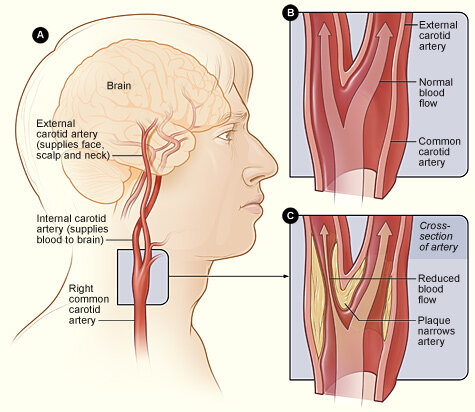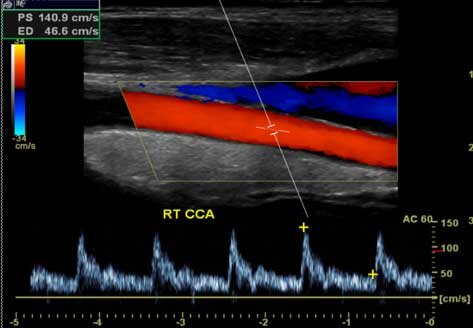What is a Carotid Ultrasound?
Carotid ultrasound is a diagnostic imaging technique that uses high-frequency sound waves to produce images of the carotid arteries and the moving blood within them. Carotid arteries are blood vessels located on both sides of your neck which carry blood from the heart to the brain.
Why is This Exam Done?
Carotid ultrasounds can be used to prevent strokes by detecting narrowing carotid arteries. Carotid ultrasounds are used to discover blood clots and detect blood flow obstructions.
How Does it Work?
Ultrasound uses high-frequency sound waves to produce images of the body’s tissues, structures, and blood flow. A transducer/probe and ultrasound gel work in combination to absorb the reflected sound waves to produce images on the monitor
What Will Happen During the Exam?
The sonographer will request that you lay quietly during the test to help ensure that the images are clear. Warm, water-based gel will be applied to the ultrasound transducer or directly on the skin. The sonographer will then move the transducer around on the area to obtain clear images of the underlying structures and blood vessels for the physician to interpret.
What Are the Benefits and Risks?
The benefits of Carotid Ultrasound:
If narrowing of carotid arteries is detected early enough, action may be taken to prevent a stroke
Ultrasound images are shown in real-time as they happen
The structure and movement of the body’s internal organs, as well as blood flowing through blood vessels are able to be seen and recorded
The exam is painless and non-invasive
No ionizing radiation is used for this procedure
Risks you should be aware of:
There are no known risks for ultrasound
Do I Need an Order from My Doctor?
This scan does not require a physician order. We will be happy to send a second copy of your results to the doctor of your choice if you would like. If you do not have a primary care provider, our friendly advisors can help you find one if desired.


